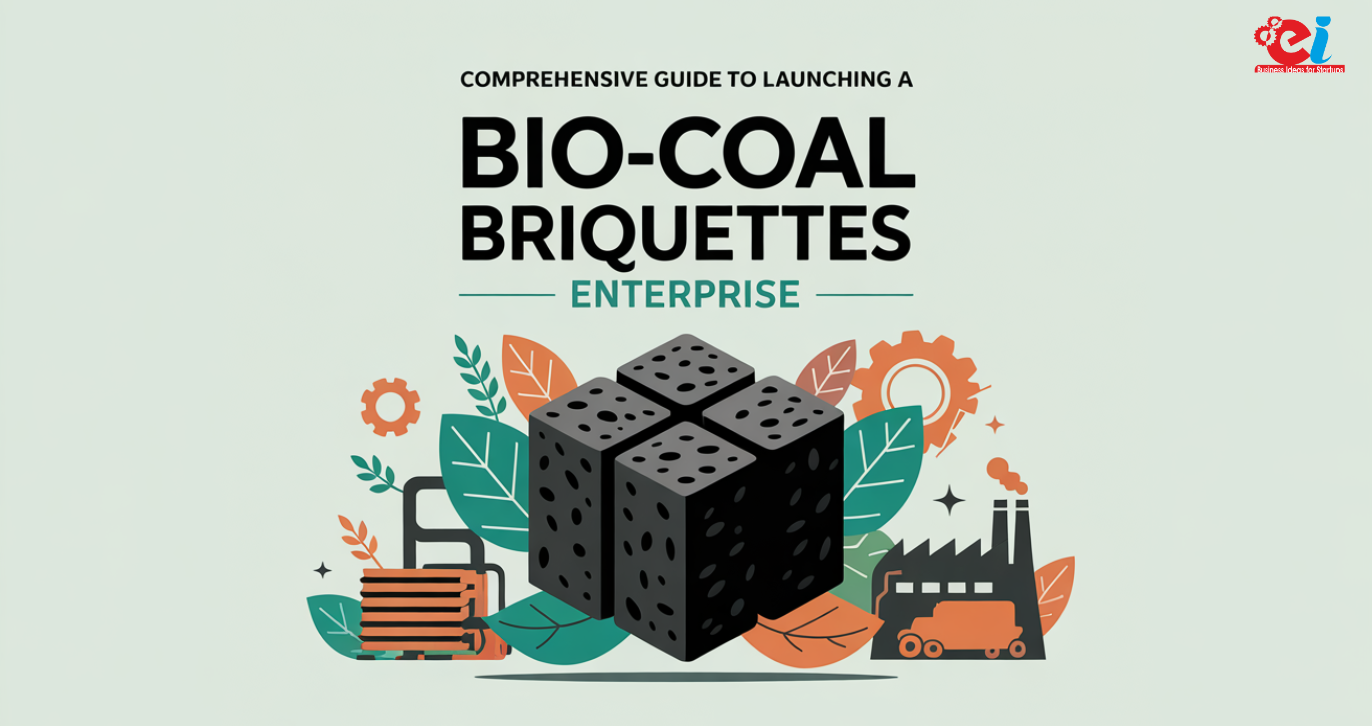
Bio-coal briquettes are the modified version of conventional fuels, constituting an alternate source of energy since the escalating demand for renewable and eco-friendly energy across the globe is mortally influencing such substitutes. Thus, bio-coal briquette business ventures become both profit-making and a step towards the green energy revolution. Previously, one would get all the trained knowledge on how to kick-start and operate a bio-coal briquette business successfully using this guide.
What Are Bio-Coal Briquettes?
Bio-coal briquettes are dense, compressed blocks made from biomass material since they are meant to serve as an alternative use for coal or wood fuel. These benefits fuel usage in much lower emissions, higher efficiency, and sustainability.
Advantages of Bio-Coal Briquettes
- It helps to mitigate global warming as well as dependence on fossil fuels.
- Agricultural and industrial wastes are used as the source materials.
- High heat value combusts efficiently, leaving a very small amount of ash.
- Renewable sources are materials that are easy to obtain.
- They offer jobs in briquette collection, production, and distribution.
Market Research and Feasibility Study
Conducting thorough market research is vital to enable a bio-coal briquettes venture to explore demand, competition, and likely challenges.
- Identifying Target Market
- Household: Used for cooking and heating.
- Industrial: In place of coal for boilers and furnaces.
- Restaurants and Hotels: Preferred for grilling and heating purposes.
- Brick Kilns and Other Commercial Establishments: Provide alternatives to conventional fuels.
- Analyzing Competition
- Legal and Regulatory Requirements
- Register with the relevant authorities.
- Acquire any necessary environmental clearances.
- Observe any industry regulations for production, packaging, and distribution, among others.
- Setting Up the Production Unit
- A proper location needs to be chosen that meets the following requirements:
- Proximity to raw materials.
- Easy access to transportation and distribution channels.
- Sufficient space for storage and production.
- Availability of amenities like electricity and water.
- Procuring Raw Materials
- Raw materials may entail:
- Residues from farming (rice husks, wheat straw, sugarcane left out).
- Charcoal dust and other biomass waste.
- Machinery and Equipment
- Briquette Press Machine: The machine used for compressing biomass into briquettes.
- Crusher/Shredder: produces smaller particle sizes with raw materials.
- Dryer: To reduce moisture content before processing;
- Carbonization Unit: Where biomass is converted into bio-coal;
- Packing Equipment: Provides safe storage.
Visit this page for more information: Start a Business in Biotechnology Sector
Marketing and distribution strategies
Brand and Package
Create great brand with a clear message on the advantages of using bio-coal briquettes. Design eco-friendly packaging that attracts ecofriendly customers.
Pricing Strategy
Establish competitive prices considering costs of production, market demands and pricing by competitors.
Sales and Distribution Channels
- Direct sales: Selling to households, industries, and commercial consumers.
- Retail Distribution: Supermarkets, fuel stations, and hardware stores.
- Online marketing: Selling via different e-commerce platforms as well as social media.
- Institutional Supply: Bulk supplies to schools, hospitals, and industries are sold.
Promotional Strategies
Digital marketing (SEO, social media, online ads)
Conduct awareness and workshops on sustainable energy.
Offer discounts for bulk purchases.
Partner with NGOs and environmental organizations.
Financial Planning and Investment
- Revenue Generation
- Selling in bulk and retail.
- Contracts with industries for continued supply.
- New market expansion through franchising and collaborations.
Funding Options
- Self-Financing: Personal savings and investments.
- Bank Loans and Grants: Financial backing from banks as well as government programs.
- Investor Partnerships: Attracting investors interested in green energy projects.
- Crowdfunding: Raising funds through online platforms.
Challenges and Solutions
Common Challenges
- High Initial Investment: Setting up production units and acquiring machinery.
- Raw Material Shortage: Seasonal variations affecting biomass availability.
- Market Awareness: Educating consumers about the benefits of bio-coal briquettes.
- Competition from Traditional Fuels: Competing with cheaper, non-renewable alternatives.
Solutions
- Government Incentives: Avail subsidies and tax benefits for renewable energy businesses.
- Supply Chain Management: Establish reliable raw material suppliers.
- Community Engagement: Work with local farmers and businesses to ensure a steady supply of materials.
- Quality Assurance: Maintain high-quality standards to build customer trust.
Final tips
- Keep abreast of market trends and government policies.
- Invest in research and development to enhance product efficiency.
- Integrate the supply chain for reliability with raw material suppliers.
- Focus on customer education and after-sales service.
Starting your own bio-coal briquettes business could be an attractive venture in terms of good returns on investment balanced with social consciousness. You now have everything you need to know and do, thanks to this guide, to set up and run your business successfully.
Closing thoughts
Starting a bio-coal briquettes company is a promising business and a green initiative. If managed properly, with the right market scoping and proper strategic execution, one could successfully establish a business that adds value towards the green energy revolution. Considering innovative marketing strategies and proficient production processes, a bio-coal briquettes business will not just thrive in a competitive arena but is bound to make good changes to the environmental situation.









